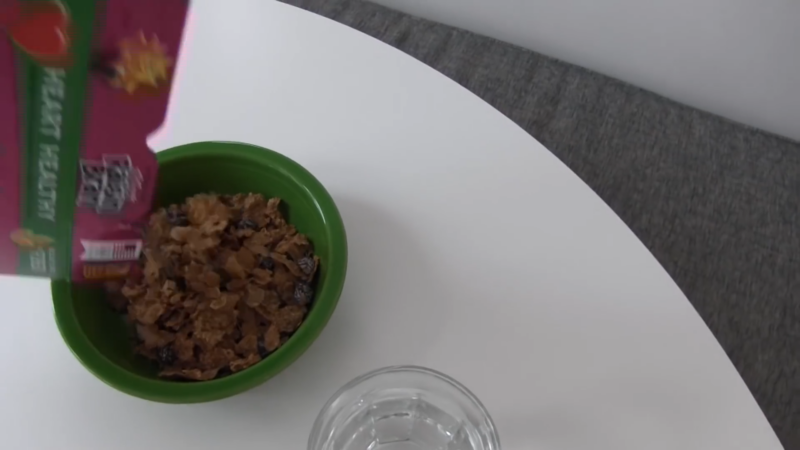The idea of pouring water over your cereal might raise a few eyebrows. After all, we’re so accustomed to reaching for milk—whether it’s dairy, almond, oat, or soy—when we sit down for a bowl of cereal. But what if you find yourself out of milk, or simply don’t enjoy the taste of it? Can you eat cereal with water? The short answer is: yes, you can, but it might not be what you expect.
What Does Cereal with Water Taste Like?
The answer depends on both the type of cereal you’re eating and your personal preferences, but here are some general observations.
Texture
Water, being thinner, doesn’t provide that richness. However, it keeps the cereal crunchy for a similar amount of time before it begins to soften. If you enjoy the crunch but aren’t too attached to the creamy texture milk offers, this may not bother you.
Flavor
Milk adds a subtle sweetness and richness to cereal, especially if you’re using full-fat or flavored varieties. Water, on the other hand, is flavorless, which can leave some cereals tasting flat. Sugary cereals might not be as vibrant when mixed with water, and you may miss that slight enhancement milk provides.
The Pros and Cons of Eating Cereal with Water

- Calorie-Free: One of the most significant benefits of using water instead of milk is the lack of calories. If you’re watching your calorie intake or trying to cut down on fats and sugars, water can be a simple way to lighten up your breakfast.
- Cost-Effective: Water is free, making it the most budget-friendly option out there. With the rising cost of milk and plant-based alternatives, water might be an appealing choice for the wallet-conscious.
- Easily Accessible: Water is always available, whether you’re at home, traveling, or camping. You don’t need to worry about refrigeration or spoilage like you do with milk.
- No Added Flavors: If you want to focus on the pure taste of the cereal itself, water keeps things neutral. Milk often adds its own flavor, which can overpower certain cereals.
- Lack of Creaminess: The most obvious downside is that water doesn’t offer the creamy texture that milk does. This can make the overall experience less satisfying for those who love that rich, smooth element.
- Blandness: Since water has no taste, it doesn’t enhance the flavor of the cereal like milk can. This is especially noticeable with cereals that rely on the interaction with milk to bring out their full flavor.
- Faster Sogginess: Water doesn’t have the fat content that slows down sogginess, so cereal might get mushy more quickly than it would with milk.
Why Milk Works So Well
To truly understand why milk pairs so beautifully with cereal, it helps to look at the science behind it.
Fat and Flavor
Milk, especially whole milk, contains fats that are known to enhance flavor. Fat is a natural flavor carrier, meaning it amplifies the taste of whatever it’s paired with. The sweetness in cereals is often brought to life by the creamy, rich nature of milk, which balances out flavors, especially in cereals that are already sugary.
Sweetness
Creamy Texture
Alternatives to Milk and Water
If water doesn’t sound like the perfect solution, there are several other alternatives you can consider that still avoids dairy while adding more flavor or texture than plain water.
| Alternative | Description | Best Paired With |
| Juice | Some people use juice, with orange juice being the most popular. It adds a tart, sweet twist to the cereal. Unconventional, but refreshing. | Fruity cereals or granola |
| Tea | Warm or cold tea, such as chamomile, mint, or green tea, can be an interesting alternative. It works best with less sweet cereals and offers a subtle, earthy flavor. | Less sweet cereals |
| Plant-Based Milks | Alternatives like almond, oat, soy, or rice milk offer unique flavors, from almond’s nutty creaminess to oat’s rich texture. Often fortified with vitamins and minerals. | Most cereals, especially common favorites |
| Yogurt | Mixing cereal with yogurt provides a thicker, more filling texture. Greek yogurt adds protein and tang, while lighter yogurts make for a creamier experience. | Granola, muesli, whole-grain cereals |
Is Cereal with Water Healthier?

Fewer Calories
One obvious advantage of using water is the reduction in calories. A typical serving of milk adds around 90–150 calories to your meal, depending on the type. By using water, you cut these calories entirely, making it a lighter breakfast option.
Loss of Nutrients
However, using water means you’re also missing out on important nutrients that milk (or plant-based milk alternatives) provides. Milk is a good source of calcium, vitamin D, and protein, all of which contribute to bone health and overall wellness.
Satiety
Milk, especially whole milk, contains fat and protein, which help keep you full. Water doesn’t provide this level of satiety, so you may find yourself feeling hungry soon after your meal if you choose water instead.
FAQs
The Bottom Line
So, can you eat cereal with water? Absolutely. Is it the same as eating it with milk? Not quite. While it won’t offer the creamy texture and flavor-boosting properties of milk, water is a functional, calorie-free, and accessible alternative when you need it.
It’s not for everyone, but for those who like to keep things simple—or are simply out of milk—it’s an option worth considering. Who knows? It might just become your next quirky food hack.




